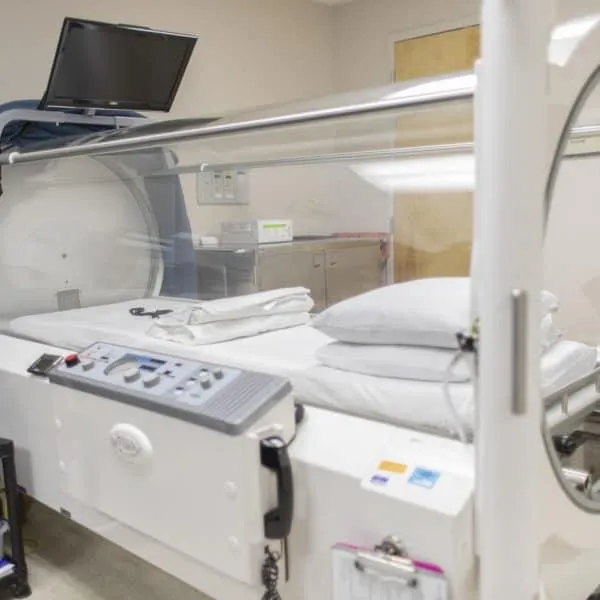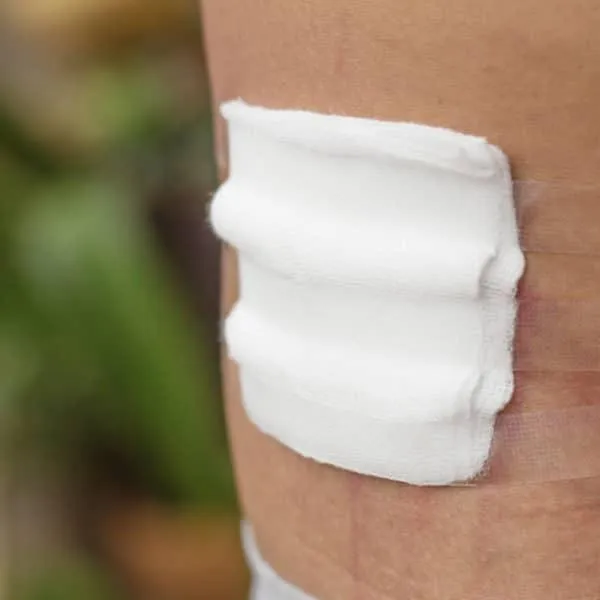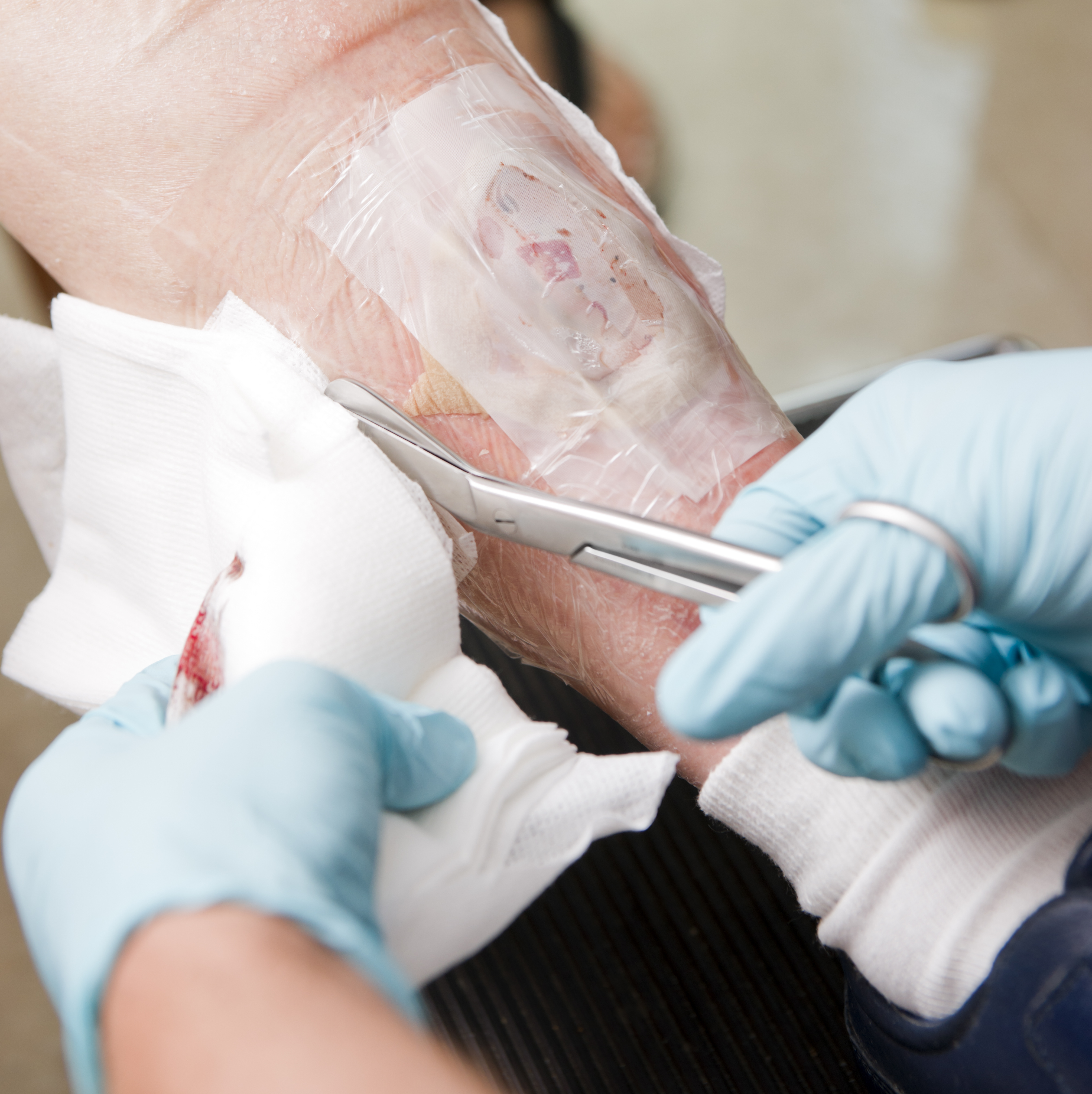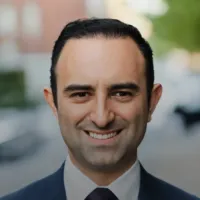Wound Care for Cancer Patients: Expert Treatment and Healing
Many cancers can cause a skin ulcer. These ulcers are called cancerous ulcers. Some chronic wounds can turn into cancerous ulcers. These include burns, radiation and venous wounds.
Find a Wound Care Center ® Near You
If you or a loved one is struggling with a wound that won’t heal, a Healogics Wound Care Center can help. Since there is no need for a referral, your treatment is only a click and call away.
Home»Diabetes and Wound Healing

Malignant and Atypical Wounds: Diagnosis and Treatment
What is a malignant wound? Many cancers can cause a skin ulcer. These ulcers are called malignant ulcers or cancerous ulcers. Some chronic wounds can turn into cancerous ulcers. These include burns, radiation and venous wounds. Malignant wounds require specialized care and attention to prevent further complications and promote healing. What is an atypical wound?…
Cancer Patient Resources

Hyperbaric Oxygen Therapy (HBO)
Hyperbaric oxygen therapy (HBOT) is a treatment that increases the amount of oxygen blood cells can carry. It has been used for more than 70 years to improve healing in tissues deprived of oxygen. Studies show it significantly improves healing for some types of chronic wounds.

Ulcer Wound Care: Best Practices for Optimal Healing
At Healogics, we know that managing a wound properly is essential for healing and preventing complications. More than 6 million Americans live with chronic wounds, significantly impacting daily activities, mobility, and overall well-being. Whether you’re caring for a diabetic foot ulcer, pressure injury, or another type of wound, following the right care procedures is vital…

Bedside Wound Care Los Angeles: Patient-Centric Solutions
The Importance of Bedside Wound Care in Los Angeles
As patients navigate the complexities of their recovery, the role of immediate and attentive wound care cannot be overstated. Providing care at the bedside allows healthcare professionals to monitor wounds closely, ensuring optimal healing conditions while addressing any potential complications swiftly. This localized approach not only enhances the patient experience but also fosters a more comprehensive understanding of individual healing processes. With a focus on education, healthcare providers can empower patients with knowledge about their wounds and the necessary care they require. In a city where diverse populations and varying health needs converge, tailored bedside wound care solutions are essential. They promote faster recovery times, reduce the risk of infections, and ultimately lead to improved health outcomes. As Los Angeles continues to prioritize patient-centric solutions, the importance of effective bedside wound care remains at the forefront of healthcare innovation and quality improvement. By investing in this crucial aspect of patient care, we can ensure that each individual receives the attention and expertise needed for their unique healing journey.
Related: How To Reduce Rehospitalizations
The Critical Role of Bedside Wound Care in Skilled Nursing Facilities
In post-acute care, skilled nursing facilities are very important for people who need help recovering from complex medical problems. A big challenge in these places is how to treat and manage wounds. This is especially true for pressure ulcers, diabetic ulcers, and surgical wounds. Bedside wound care is now seen as an important part of offering high-quality and patient-centered care in skilled nursing. It helps lower the risk of complications, speeds up healing, and makes patient outcomes better overall.

What are the complications of bedsores?
Bedsores, or pressure ulcers, can bring many complications that can harm a person's health and way of life. A major risk of bedsores is getting an infection. When the skin breaks open because of long-lasting pressure, bacteria can get inside. This may cause an infection in that spot or even a serious whole-body infection called sepsis, which can be life-threatening.
If bedsores are not treated, they can get worse and hurt deeper tissues. This can damage muscles and bones. Due to this, people might feel pain all the time and have problems moving. It can be hard for them to do normal things each day, and they might need more help from other people.
Another big problem is how bedsores affect the mind of patients. When someone gets bedsores, it can make them feel embarrassed. They may feel more stress and even feel down or low. This is even harder for people who already cannot move much or live with other health problems. Bedsores also mean people might have to stay in the hospital for a longer time. This can make healthcare bills go up because they often need special wound care or advanced wound care. Sometimes, people might even need surgery because of them.
Patients who have bedsores often get other health problems, like blood clots. This happens because they cannot move as much. When a person is not able to move for a long time, it makes recovery and getting better much harder. It is very important to try to stop bedsores from starting and to treat them early if they do. Changing a patient’s position often, keeping their skin clean, and sleeping on special mattresses can lower the chances of pressure ulcers and other complications.
When people know how serious bedsores can be, they and their caregivers can act early. This helps with better wound care and can lead to better health for everyone involved.
Healing Challenging Injuries
Healing from tough injuries needs a plan that looks at both your body and your mind. You should always get professional medical advice and the right treatment so you can heal well. Physical therapy helps to get your strength, movement, and daily function back after an injury. Mental health support and counseling also help a lot. These can make it easier for people to deal with strong feelings from their injuries, so healing is complete.
In some cases, there are other ways to help with pain like acupuncture, chiropractic care, or massage. These can work along with regular treatments. They can make you feel better and help manage pain. It is important to be patient with yourself when getting better from a tough injury. You should also follow what your healthcare providers tell you to do. This can help you heal and feel good over time.

Keeping a healthy lifestyle is important for healing. You can do this by eating good food, getting enough sleep, and moving your body often. All these things help your body do its job and heal. Having support from people like family and friends can help you feel better and give you a boost when you need it most. It is good to remember that the way each person goes through healing is not the same. You should listen to your body, keep a good mindset, and feel proud of small steps you take. Even small wins are a big deal on your road to full recovery.
Bedside Wound Care Los Angeles
Los Angeles has many skilled nursing facilities that focus more on bedside wound care. A lot of people live in this city, and many of them are older. Because of this, there is more need for wound care services at these skilled nursing places. In Los Angeles, bedside wound care means that skilled nurses, wound care experts, and doctors all work together. They give patients hands-on care right at the bedside. With this, there is no need to move someone to a clinic for wound care, which can be hard and sometimes risky. Getting care this way is easier, less stressful for people, and also does a good job in helping with wounds. At Royal Wound Care it's our mission to provide quality wound care support while also putting the patients care at the forefront.
Related: Partner With Royal Wound Care
Skilled Nursing Wound Care Services
Wound care in skilled nursing facilities should cover all of the patient’s needs. These wound care services must be based on facts and research. They are shaped to fit what each person needs. A skilled nursing team often helps with wound assessments, debridement, using advanced wound dressings, infection control, and giving support for nutrition. They also watch the wound over time.
What makes the best skilled nursing facilities stand out is their focus on following regular routines for wound care and bringing in many kinds of experts. There will be nurses, doctors, people who help with physical needs, and food specialists. When these people work closely together, people get a steady wound management plan. This plan matches each person’s health goals. In the end, their care goes together so well that the patient gets the best support.
Pressure Ulcer Wound Care Experts
Pressure ulcers, also called bedsores, are a very common type of wound you will find in SNFs. Most of these wounds happen when there is pressure on the skin for a long time. This often affects people who are not able to move or who stay in bed a lot. Wound care experts know what to look for and what to do when it comes to pressure ulcer wounds. They are able to spot early signs, put in place steps to stop wounds from starting, and use new ways to help with wound healing. When an expert in wound care works on these cases, it does not just help people who already have wounds. It also helps teach other staff and caregivers in an SNF how to prevent these wounds. This teaching work is very important because it helps make sure these wounds do not keep coming back.

Wound Management in Skilled Nursing Facilities
Good wound management in skilled nursing facilities is not just a one-time thing. It needs to be an ongoing and active process. This work goes from the first checkup to when there is full wound healing. To do this well, you have to watch the wound often and change care as needed. A few key parts of wound care in skilled nursing include writing down notes about the wound, knowing what stage and type the wound is, picking the right dressings, and stopping infections before they start. It is also very important to look at health problems like diabetes, bad blood flow, or poor eating, because they can make healing harder. If skilled nursing teams handle wound care early and stick to a clear system, they can lower the risk of chronic wounds, sepsis, and keep people from having to go back to the hospital.
Related: Effective Chronic Wound Care Strategies
Managing Pressure Ulcers Through Bedside Wound Care
Managing pressure ulcers well needs both medical skill and good care given right at the spot. Bedside wound care gives both of these. When caregivers come to the patient, they can look at the wound, give help on time, and change how they treat problems right away if needed. This way, patients also follow care instructions better. A bedside approach is very helpful for people who are weak or sick and cannot go out to get outpatient wound care. With regular visits done at the patient’s bedside, the caregiver can check the pressure ulcers often. They can act fast to help them heal and stop them from getting worse.
Why Bedside Wound Care Matters for Skilled Nursing Success
Bedside wound care is now one of the most important parts of good SNF care. The way that SNFs do wound care affects health results, facility ratings, and how happy patients feel. When SNFs choose to keep wound care in-house, they show that they really care for the health and healing of their people. This helps people heal faster, lowers infection risk, stops many hospital trips, and helps get better CMS star ratings. Families and caregivers also feel better knowing their loved ones get careful, expert wound care right at the bedside, without needing to go out of the facility. Now, when care is judged on value and results, giving bedside wound care helps the facility do well for both people and business.
How to Improve SNF Outcomes with Weekly Wound Visits
Regular wound care is very important. If there is a weekly wound visit from a specialized clinician, the chance of wound healing goes up a lot. It can also lower the risk of complications. The visits help track changes in the wound, spot infection early, and step in quickly if something goes wrong. These visits also give ongoing support and education to facility staff. This helps staff in the SNF feel more confident and skilled with wound care. When weekly wound rounds are a regular part of care, facilities can improve the quality of care, save money, and meet all rules and standards.
Bedside Wound Care Teams for Skilled Nursing Rehabilitation Centers
Successful bedside wound care does not come from just one person. It is the result of a team working together. In skilled nursing centers, there is often a team for wound care. This team can be made up of certified wound care nurses, nurse practitioners, physical therapists, dietitians, and doctors. Each of them brings a different skill to the team. These skills make sure that wound care is done well for every patient.
The team works with the rehab staff so the wound care plan matches each patient’s needs and helps their recovery. When wound care becomes part of rehabilitation, the teams can help healing in more ways than just the skin. They help people move better, feel more independent, and have a better life. This kind of healing is about the whole person.
Get in Touch with Royal Wound Care today!
Frequently Asked Questions
What qualifications do bedside wound care professionals have?
Bedside wound care is given by medical professionals who know a lot about how to treat wounds. These skilled wound care experts use what they have learned over many years to help with even the hardest wounds. Because they have strong wound care management skills, they make sure that people get the best support from their care team. Their good skills help people heal faster and feel better after their care.
How often should wound dressing be changed?
How often you should change wound dressings depends on the kind of wound you have and how much it drains. Most of the time, you need to do wound care every day or when skilled nursing staff tell you to. Use good hygiene and follow best practices to keep the wound clean. This will help protect you from infections and other complications. Skilled nursing and the nursing staff are there to help with wound care management.
What are the signs of wound infection?
The main signs that you may have an infected wound are redness, swelling, more pain than before, pus, a bad smell, and warmth around the area. It is good to watch closely for these complications. If you notice them, get help from a wound care professional as soon as you can. Quick action can help stop the symptoms from getting worse and causing big health problems later.
Can family members be trained in basic wound care?
Yes, your family can learn basic wound care. Healthcare providers often make wound care plans for the family. These plans help people get the skills they need to help each day. This allows them to work with healthcare providers to give good care.
Is bedside wound care covered by insurance in Los Angeles?
Insurance often pays for bedside wound care services in Los Angeles when these services fit the rules for medical care. Healthcare providers help people understand the money side. They help check what insurance will and will not cover. This help makes it easier for people to get wound care for different types of wounds. It also lets people use good treatment choices for wounds with the help of healthcare providers.
WEST HILLS
7230 Medical Center Dr. Suite 100
West Hills, CA 91307
(818)–660–2977
BEVERLY HILLS
9735 Wilshare Blvd #210B
Beverly Hills, CA 90212
(818)–660–2977
If you are interested in making an appointment, please click here to find a Wound Care Center near you.
Request an Appointment at a Royal Wound Care Facility near you.
Royal Wound Care is the expert in wound healing. Our board-certified wound care specialists are ready to help you begin your healing journey. Click the button below to request an appointment at a Wound Care Center near you—no referral needed
© 2025 Royal Wound Care, LLC. All rights reserved.
site by Growth Partners Marketing

